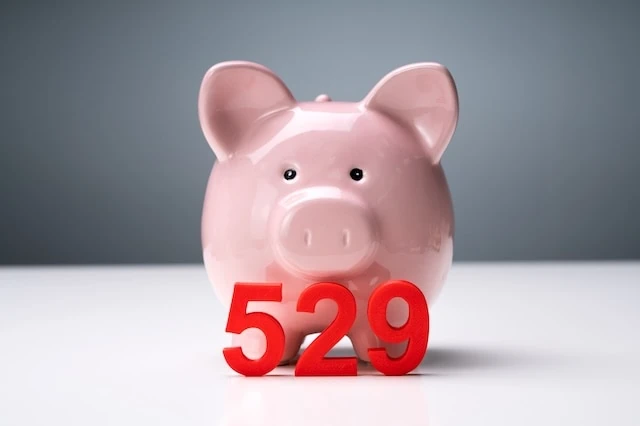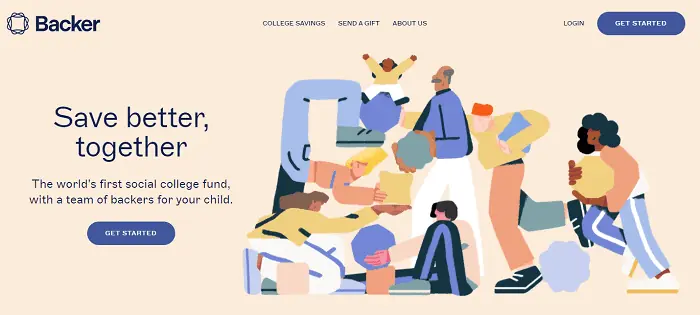Financial stress ranked #1 on the American Psychological Association’s annual Stress in America™ survey this year. It has held this position every year since 2007 when the survey began.
It’s natural for parents to want to shield their children from some of this stress by investing money towards their future. However, the best strategies for investing in your child’s future might seem unclear.
- When should you get started?
- What are the best investment accounts?
- What are the best investment vehicles?
- How much should you save?
Undoubtedly, these questions pose serious concerns for parents looking to help their children overcome financial stress. Learn the answers to these questions and more below.
Before You Start Investing for Your Child’s Future

When it comes to investing, the rule is usually that the sooner you invest, the better. But that doesn’t necessarily mean you should start investing for your child the day they are born. Before pursuing investing for kids, you should have emergency savings set aside and you have confidence in your retirement funds.
In retirement, you absolutely need to have affordable housing, food and other necessities. If you can’t, it will be a burden to you as well as your child. It’s similar to how you need to put on your own oxygen mask before you assist another. Help yourself first and then you’ll find yourself in a better position to aid others.
Paying for your child’s college or retirement is ideal, but not as high of a priority. Get yourself to a place where you can “max out” your 401k, especially if you work for a company that matches part of your contributions. Financial advisors commonly say once you’re able to contribute 15% of your income towards retirement, that’s when you should start investing for your child.
This percentage might vary depending on your investment history. If you’ve worked towards your retirement since a teenager and have already saved a significant amount, this percentage might be lower. People who got a late start saving for retirement and want to catch up may need a higher percentage.
Invest for Your Child’s School Savings Account (529 Plan)

When you start to invest for your child’s future, begin with a tax-advantaged savings account. A 529 college savings account acts as one of your best options. These plans can cover expenses related to K-12 tuition if you plan to send your child to a private school or can go toward covering college tuition costs.
These tax-advantaged accounts accumulate on a tax-deferred basis and distributions remain untaxed if used for qualified higher education expenses. You don’t need to use the money at any one specific college, but can use it at any of the nationwide qualified colleges.
Usually, the college doesn’t have to be in the state where you created your 529 account. There are even hundreds of foreign universities that qualify. Make sure to compare the benefits of various state plans before choosing one.
A 529 college savings plan works similarly to a Roth 401(k) or Roth IRA in that you invest your post-tax contributions in mutual funds, target date funds or other investments.
Another category of 529 plans is prepaid tuition plans. These plans let you prepay for costs of in-state public colleges and you can convert the funds for use in other states or at private colleges. If you have confidence your child will attend a private school, you can open a Private College 529 Plan, which over 250 private colleges sponsor.
Once your child begins college, money from the account can go toward eligible expenses, typically including tuition, computers, books, supplies, and housing (if the student enrolls at least half-time). Room and board can’t exceed the “cost of attendance” figures colleges provide. Distributions can also go toward repaying federal and private student loans.
If you withdraw money for non-qualified expenses, the earnings portion becomes subject to ordinary income taxes as well as a 10% tax penalty. You can waive this penalty if the beneficiary attends a U.S. Military Academy, earns a tax-free scholarship, dies, or becomes disabled. The earnings would still fall subject to tax, however.
Suppose your child doesn’t attend college. In that situation, you can switch the beneficiary to another qualifying family member, have yourself become the beneficiary and further your own education, use it for K-12 tuition (up to $10,000), or use the money to repay student loans (up to $10,000).
Funds can also roll over to a 529 ABLE account, which acts as a savings account for people with disabilities. If you have a willingness to pay the penalty and taxes, you can always withdraw your money for any reason. Plans usually have minimum initial contribution requirements. After that, you can make automatic money deposits, contribute lump sums, or both.
How to Open a 529 Account
If you have interest in opening a 529 account for your child to save money toward educational expenses now or in the future, you should consider opening an account sooner than later. This will allow you to make the most of compounding returns as your child ages and nears his or her financial need.
One company worth knowing in this space is Backer.
Backer
The company aims to make saving for college so easy that every American child will have a college fund, no matter their family’s means, where they come from, or what they look like.
Backer users have lauded its service for three primary reasons:
- Simplicity – Backer allows families to start a college fund or enhance their existing one in under 3 minutes
- Smart Design – The company leverages robo-advice to help families maximize their college savings with tax-free investing in line with the details discussed above
- Social – Backer allows friends and family to support the child’s college fund through gifts and cashback rewards through brand-name partners
- Backer allows you to invest your educational savings tax-free in a 529 plan and also allows for family and friends to help you to save more.
- Use low-cost index funds to invest in different asset classes, including stocks and bonds.
Related: Best Kid-Friendly Debit Cards
Invest for Your Child’s Future Retirement

Helping your child start to save for retirement can put them at a significant advantage later in life.
If your teenager has a job like a freelance writer, lifeguard, fast food worker or something else, you can open a custodial IRA in their name and invest in assets that appreciate in value or other income-generating assets.
A custodial account is a financial account maintained by an adult for another person, such as your child. You would manage your teenager’s account until they reach the age of majority, which is either 18 or 21, depending on your state. These accounts transfer ownership and you can set them up with the best investing apps for college students to manage their own investments.
With the custodial IRA, you can open a traditional or Roth IRA. In either account type, select the best investments for young adults and watch the returns compound over time. Opening and contributing to a child’s custodial IRA requires them to earn taxable income. Sadly, allowances don’t count and you can’t contribute more than what they make each year.
Keep in mind that, even if contributions don’t seem large, contributing regularly over long enough periods can result in a significant impact to their bottom line. These contributions add up and grow through returns earned over time.
A more straightforward, kid-friendly way to save for your child’s retirement is by opening an Acorns account. An Acorns account can be opened in under five minutes and you can start investing without much thought.
The “round up” feature is the most well-known part of Acorns. It rounds up your purchases to the nearest dollar and invests the money into your chosen portfolio. You can also contribute lump sums. This account is an easy way to save for your child’s retirement incrementally.
Invest for Your Child’s Future Expenses

You can also save for your child’s future expenses without a specific plan for how those funds should be used. Uniform Transfer to Minors Act (UTMA) accounts and Uniform Gifts to Minors Act (UGMA) accounts are two beneficial types of custodial accounts that let teenagers invest.
UTMA and UGMA accounts come controlled by the custodian until the minor reaches the age of majority for your state.
Money in these accounts has the tax advantage of only facing taxes at the child’s rate. For example, a child under age 19 wouldn’t pay taxes on the first $1,350 and only 10% for the next $1,350. After that, money falls under the guardian’s marginal tax rate.
With these accounts, you don’t have to limit your contributions to the amount of money your child makes. No contribution limits exist, though anything over $19,000 each year (or $38,000 for a married couple) requires paying the federal gift tax.
Start Saving for Your Child’s Future Now
You have multiple options to consider when deciding how you’d like to start saving for your child’s future. Of the many I’ve reviewed, I find the two below to provide a simple, easy to use interface and the investments geared toward building long-term wealth.
→ Acorns Early
Acorns Early acts as one type of UGMA account and you can open one any time after the birth of your child. This account offers more flexibility for how to spend money than 529 plans and most other options.
You can get Acorns Early through the Acorns Premium subscription tier ($12/mo.), which also includes Acorns Invest, retirement and checking accounts, as well as debit cards for teens.
To demonstrate the power of investing a small amount from an early age, if you invested just $5 per day once your child was born and earned an average annual return of 8%, the child would become a millionaire by age 50.
Learn more in our Acorns review.
- Acorns allows you to sign up for investment, retirement, and checking accounts for you and your family, learn how to earn more money, and grow your investing knowledge.
- Famous for investing spare change automatically through Round-Ups, this all-in-one financial app helps younger generations start investing earlier.
- Invest in expert-built portfolios made up of diversified ETFs.
- Gold tier includes perks such as a 50% match on Acorns Earn rewards (up to $200/mo.), $10,000 in life insurance, picking individual stocks for your portfolio, a free Acorns Early account, and Acorns Early Invest custodial accounts with a 1% match.
- Earn even more with Later Match: Acorns will match up to 1% (Silver) or 3% (Gold) of all new IRA contributions.
- Special offer: Get $20 to start*.
- Robo-advisor with affordable fees (on larger portfolios)
- Fixed fee model
- Round-ups
- FDIC/SIPC insurance
- IRA match (Silver and Gold)
- High fixed fees for small balances
- Limited investment selections
- Must subscribe to Gold for any self-directed investing options
Related:
- Best Prepaid Debit Cards for Teens & Families [Reloadable]
- Best Free Debit Cards for Kids & Teens [Earn, Save & Spend]
- Best Acorns Alternatives: Micro-Investing Apps to Use
→ UNest
- Available: Sign up here
- Price: $4.99/mo.
UNest is a custodial account that allows parents to invest money for their kids for needs beyond just education but events like a new car, a wedding, vacation or anything else a minor might want some day.
UNest offers the UNest Investment Account for Kids through an app that makes it easy for families of all income levels and backgrounds to set up and manage savings and investment plans for their kids. UNest also has a gifting feature that allows friends and relatives to contribute to your kid’s account with just a few clicks. These gifts can be automated, too, so they never miss a birthday or holiday!
The app offers up to nine investment options for account owners:
- A conservative option investing in fixed income and bond ETFs
- Three age-based options with varying degrees of risk reflected in the investment mix (conservative, moderate, aggressive); these transition from more aggressive investments to conservative as the child gets owner and gains access to the funds
- Socially responsible age-based options also with varying degrees of risk (conservative, moderate, aggressive), likewise on the investment mix transition strategy from aggressive to conservative over time
- An aggressive option that invests 100% of the funds in Vanguard equity index ETFs, and a shortlist of popular cryptocurrencies.
Further, you can experience tax benefits related to your accounts. Specifically, UNest provides up to $2,700 of annual tax benefits as well as the first $1,350 in earnings being tax-free, though certain rules and limitations apply for these benefits.
Account holders can receive bonuses for their children’s UNest accounts via partner offers from companies such as Disney, AT&T, Uber, DoorDash, Levi’s, etc., through the UNest partner program.
For a limited time, you can even get a sign-up bonus for opening an account and funding it with UNest.
- UNest is a tax-advantaged custodial investment account for kids. It allows them to save for an education, first car, house, wedding, or even for their financial security as an adult.
- Friends and relatives can gift to your child's account with just a few clicks, or even automate their gifts.
- UNest's investment options are portfolios of various low-cost ETFs that can achieve a variety of goals. They include a conservative portfolio made up of just fixed income and bond ETFs; three age-based options that hold bonds and stocks in conservative, moderate, or aggressive allocations; three similar options that are centered around socially responsible investments; and an aggressive portfolio made up of only stock ETFs.
- Accounts enjoy up to $2,500 in tax advantages: $1,250 is tax-free, and the other $1,250 is taxed at the child's tax rate.
- Special offer: New users get $30 free when they use promo code YOUNG30 and make their first deposit.
Best Investment in Your Child’s Future
Having money doesn’t mean you necessarily have the skills for handling it. Therefore, it remains essential that you help your child develop financial literacy so they know how to save and manage money.
Make sure your child understands topics such as compound interest, investment diversification, and tax-preferred savings vehicles. You can impart your personal knowledge, buy them financial literacy books, and encourage them to take financial courses.
However, nothing comes as useful as giving them some control over their money. They will make mistakes, but that will always represent an important part of learning. Invest in your child’s future by giving them the financial tools teens and young adults need to succeed.












